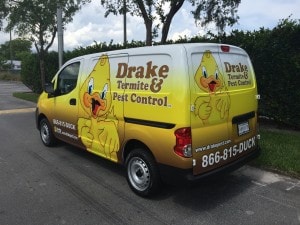Pests are more than a nuisance; they threaten your health, comfort, and home structure. From tiny ants in the pantry to rodents in the attic, pest problems can escalate quickly if ignored. This pest control guide gives you everything you need to manage and prevent infestations confidently.
You’ll learn how to identify pests, understand their pest health risks, explore home pest prevention strategies, and decide when to handle things yourself with DIY pest control methods or call in Daytona’s leading extermination services. Let’s walk through what every homeowner should know about effective pest management for long-term results.
How to Identify the Most Common Household Pests
Understanding what kind of pest you’re dealing with is the first step toward controlling it. Common household pests vary depending on your location and climate, but there are a few frequent offenders across the board.
You will likely see cockroaches, ants, mosquitoes, and other pests in warm, humid areas. Mice and rats are common in cooler regions, especially as temperatures drop. And no matter where you are, spiders, silverfish, bed bugs, stink bugs, and termites can show up when conditions are right, making them common pests.
Pest infestation signs are usually subtle at first. Droppings, chew marks on wires or food packaging, and strange smells can all be indicators. You might also hear scratching in the walls or see shed wings, especially from termites or ants. Insect pests like cockroaches often leave greasy trails or exoskeletons behind, while bed bugs leave tiny blood stains or dark spots on bedding. These are some classic pest infestation signs.
Hiding spots tend to be warm, dark, and undisturbed. Think behind your refrigerator, under sinks, in attic insulation, and inside wall voids. Pests choose these areas because they offer safety, shelter, and access to food or water. Checking these areas regularly gives you ample time to prepare your home for pest control treatments. It also helps spot a problem before it grows, a key home pest prevention tip.
Hidden Dangers Pests Bring to Your Home and Health
Pests might seem harmless at first glance, but they can pose serious health and structural risks, including damage to homes and pest health risks.
Disease transmission is one of the most serious risks pests pose. Rodents are notorious for spreading illnesses such as Salmonella, Hantavirus, West Nile virus, and leptospirosis. As they search for food, they leave behind contaminated droppings and urine, especially in kitchens and pantries, which puts your family’s health in danger; these health risks can be severe.
Allergies and asthma triggers are closely linked to cockroach infestations. Their saliva, droppings, and shedding body parts become airborne and can cause allergic reactions, irritating children’s respiratory systems and those with sensitivities. In homes with chronic exposure, asthma symptoms can significantly worsen.
Food contamination can result even from relatively harmless pests like ants, flies, and crawling insects. These small intruders can carry bacteria from trash bins or other unsanitary areas onto your food-prep surfaces, increasing the risk of foodborne illness and hygiene problems in your kitchen.
Structural damage follows and is often caused by pests like termites and carpenter ants. These pests quietly destroy wood framing, support beams, and flooring, classic pest damage to homes. They may also weaken decks and porches.
Electrical hazards arise when rodents chew through insulation and wiring. This behavior is more than just inconvenient; it can spark dangerous electrical shorts or even house fires. Their nests can also compromise HVAC systems and other home infrastructure.
Insurance exclusions can leave homeowners with the full cost of pest-related damage. Many home insurance policies exclude coverage for pest infestations, viewing them as preventable through proper maintenance. If pests chew through your walls or wiring or cause damage, you’re likely paying out of pocket.
Decreased property value is a real risk when pests go unchecked. Active infestations or signs of prior damage can cause failed home inspections, delayed closings, and reduced buyer offers. Even the suggestion of pest problems can lower buyer confidence and hurt your bottom line.
Best Practices to Prevent Pests in Your Home
Preventing pests in your home is easier and more effective than dealing with an infestation. These simple pest prevention strategies can help keep your home protected year-round for a truly pest-free home:
Seal Entry Points: Use caulk, mesh, and weather stripping to close cracks, vents, and openings around pipes and windows; smart exclusion techniques to deter pests.
Keep the Kitchen Clean: To prevent pests, maintain cleanliness, store food in airtight containers, wipe surfaces, and avoid leaving dishes or trash overnight.
Take Out the Trash Regularly: Use bins with tight-fitting lids and empty them often to manage waste properly and discourage pests seeking shelter.
Trim Plants and Trees: Remove branches and shrubs to reduce pest access, which is part of yard maintenance and proactive measures.
Remove Standing Water and Yard Debris: Eliminate standing water, get rid of debris or mulch near foundations, and keep firewood away to prevent breeding grounds and create a pest-free environment.
Pest Control Methods: DIY vs. Professional Solutions
When pests appear, you have two options: DIY pest control methods or hire professional pest control services from a reputable provider.
DIY pest control includes sprays, baits, sticky traps, gels, and natural repellents like essential oils or vinegar. These are affordable DIY methods that can be effective for minor localized issues. The methods aim to control pests at their source or eliminate pests before infestations escalate. However, DIY methods may not fully resolve deeper problems. If pests persist or appear in multiple areas, it’s likely time to call a professional.
A licensed pest control company uses stronger products, specialized tools, tailored treatments, and targeted treatments to ensure effective pest control solutions. They also employ effective pest management and may implement Integrated Pest Management (IPM) strategies.
A professional pest control visit typically includes inspection, species identification, exclusion, and a customized treatment plan. Services may cover hard-to-treat pests like bed bugs, carpenter ants, termites, wasps, fire ants, stink bugs, stinging insects, cockroaches, rodents, and more. You’ll also get guidance on best practices, like proper waste management, maintenance, pest proofing or exclusion, and moisture control, to maintain a pest-free home.
At Drake Pest, we follow safety guidelines to avoid toxic chemicals and ensure treatments are pest control safe for people and pets.
Why Integrated Pest Management Is the Smartest Approach
Integrated Pest Management (IPM) is the most eco-friendly, sustainable strategy for effective pest management with minimal environmental impact. IPM emphasizes prevention, monitoring, exclusion techniques, and targeted treatments, and only uses chemicals when absolutely necessary.
It involves understanding pest behavior, adapting sanitation, sealing, and using barriers or physical controls rather than constant chemical reliance. IPM methods may include natural repellents, monitoring, sticky traps, habitat modifications, and precision pest control treatments. Where needed, EPA-approved or EPA-recommended chemical treatments are used sparingly.
IPM is cost-effective in the long run because it resolves root causes, limits pest damage to homes, reduces pesticide resistance, and keeps your household, pets, and beneficial wildlife safe.
Drake Pest is a professional pest control provider certified in integrated pest management. We ensure effective pest control solutions while maintaining a pest-free environment.
Seasonal Pest Control Tips for Every Time of Year
Different seasons bring different pest challenges, so a yearly plan for seasonal pest control is crucial.
In spring, pests emerge after hibernation; ants forage, termites swarm, and wasps nest. Begin seasonal checks, declutter basements and garages, address moisture or standing water, and add door sweeps or screens for pest proofing.
In summer, mosquitoes, flies, fleas, ticks, and stinging insects invade. Practice home pest prevention: screen windows, remove water-catching containers, mow regularly, and use citronella or safe repellents in yards or patios.
Come fall, rodents, spiders, and cockroaches search for warmth. Seal cracks, store foods, inspect seasonal decor, and clean storage areas. Employ exclusion techniques, among other pest control strategies, to eliminate pests indoors before winter.
Winter may slow outdoor pests, but indoor issues persist. Rodents, spiders, and cockroaches may thrive in heated interiors. Regular visual checks in attics, basements, and behind appliances help, coupled with maintaining cleanliness, food sources sealed, penetration sealed, and moisture controlled.
What to Look for When Hiring a Pest Control Company
Getting the right pest control company matters for safety and lasting results. Use these guidelines:
Licensing and Certification: Confirm they are certified and compliant with the Environmental Protection Agency or state laws.
Methods & IPM: Rather than blanket chemical use, ensure the use of integrated pest management, targeted pest control treatments, and effective pest control strategies.
Transparent Pricing: Seek transparency and written estimates for services, especially for ongoing pest control services or treatment plans by a pest control provider.
Reputation: Read reviews, ask neighbors, request references, prioritize companies known for effective and professional pest control solutions.
Red Flags: Beware of companies pushing unverified claims, locking into long-term contracts unnecessarily, or using harsh chemicals without guidance.
A qualified professional pest control company can manage complex problems, including wasps, carpenter ants, bed bugs, termites, and stinging insects with targeted treatments and effective pest control solutions.
Protect Your Home with Drake Pest & Lawn Care
Don’t wait for pests to take over. Drake Pest & Lawn Care offers reliable, safe, customized solutions to keep your home pest-free year-round. With licensed experts and proven methods, we treat the problem at its source. Contact us today and take the first step toward a healthier, worry-free home.


